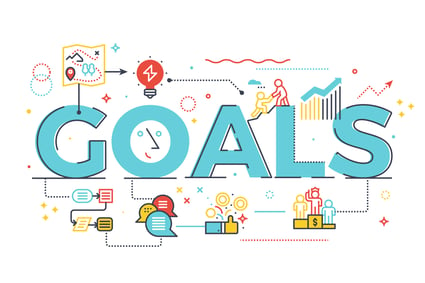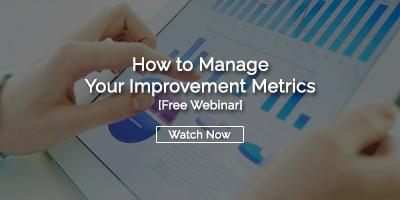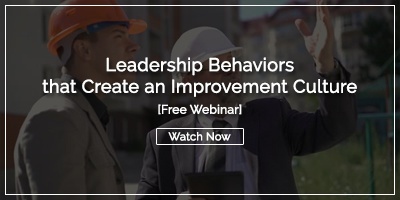 Every year, KaiNexus team comes together from around the country to meet in Austin, Texas and discuss the year we've concluded and plan the one we've entered into. This meeting is part celebration, part post-mortem, part strategic planning, and it serves to breathe inspiration and purposefulness into our team for the year.
Every year, KaiNexus team comes together from around the country to meet in Austin, Texas and discuss the year we've concluded and plan the one we've entered into. This meeting is part celebration, part post-mortem, part strategic planning, and it serves to breathe inspiration and purposefulness into our team for the year.
As I sit down to write out both my personal and professional goals for 2018, I'm struck by the importance of the work we do at KaiNexus. You see, our ultimate goal - our BHAG, if you will - is to have a specific number of improvements completed in KaiNexus by our customers. Seems kind of funny at first glance - that the goal our Marketing, Sales, Development, etc. teams are working toward is actually based on the activities of our customers, not OUR company.
But looking deeper, you find that the work each department in KaiNexus does impacts our customers' ability to complete more improvements. Marketing attracts more people who need continuous improvement software, Sales brings them into the KaiNexus tribe, Customer Experience sets them up for success, and Development builds a product that is both effective and efficient so that more people can and want to use KaiNexus.
In this way, the number of improvements our customers make is actually a reflection on the success of our company as a whole.
What about your company? What defining metric - what True North objective - is at the top of the pyramid when you write out your company's goals? What is the one most significant indicator of success for your company? What goals does each department need to reach in order for the company to meet that goal? Each team? Each individual?
Whatever your BHAG may be, if you're reading this blog it's likely that you believe continuous improvement is going to play a role in meeting it. After all - how can you reach a big, hairy, audacious goal if you don't make improvements throughout the company every day? Without improvement, you'll just keep doing what you're doing - and getting what you're getting.
So, let's take a look at some areas to focus on in your efforts for continuous improvement that will help you to reach your BHAG.
- Increase Engagement
No matter how large your company is, how long you've been working on continuous improvement, or what type of improvement work you focus on, increasing engagement needs to be a top-priority goal. The average impact of a single employee using KaiNexus is $25,000 across our diverse customer base. Obviously, this means that the more people you can get participating in daily improvement, the more impact you're going to see from your efforts.
It's important to note that this engagement doesn't need to come in the form of lengthy training processes and large projects; just giving your people access to a system in which they can manage small, daily, incremental improvement is enough to make the difference between reaching your organization BHAG and not. Yes, you'll need to explain the basic improvement concepts to people and provide strategic coaching along the way to keep them on track, but the average employee doesn't need to be an improvement expert to participate. They just have to be a person, doing a job, with the motivation, permission, and inspiration to improve that job.
- Increase Improvement Team's Efficiency
If you got scared by that last paragraph, it probably means that you need to increase the efficiency of your coaching team. I can't tell you how often we work with companies who have an improvement department that consists of just two or three people who are expected to coach an organization of 2,000 through a Lean transformation. While that ratio seems daunting, it IS possible!
Assuming that you don't have unlimited resources at your disposal, achieving Goal #1 means that you'll need to increase the efficiency of your coaching team so that you can assist more people without hiring more coaches. There are a lot of strategies you can use to help with that, but some starters are:
- Train your coaches to train other people, rather than to take on every improvement project themselves. One coach might be able to make three improvements a week - but they could also coach a department of 100 people, who could each make one improvement a month - giving that coach a much larger impact for their time.
- Utilize continuous improvement software to give you the visibility you need to identify bottlenecks, find the people who need extra coaching, and track key activity, engagement, and impact metrics automatically. Improvement software gives you both the organization and visibility you need to have a small improvement team manage a large Lean transformation.
- Train your coaches to train other people, rather than to take on every improvement project themselves. One coach might be able to make three improvements a week - but they could also coach a department of 100 people, who could each make one improvement a month - giving that coach a much larger impact for their time.
- Capture More Effective Metrics
What type of improvement metrics does your organization currently capture? If you're not able to assess the health of your improvement culture at a glance, you need to change what you're measuring and how you're measuring it. The right metrics will tell you immediately where you're doing well, where potential problems are cropping up, and where to focus in the future.
Areas of focus should include:
- Activity: Do you know how many improvements have been submitted vs. completed? How far along projects are, the statuses of any and all improvements, the average cycle time of an improvement? Can you see this information at the organizational level, but also drill down into individual departments and teams? Can you check on the improvement workload of any one person? If not, these are metrics you need if you want to understand (and improve) improvement activity in your organization.
- Engagement: Are you able to track what percentage of your organization is actively engaged in improvement? Can you easily identify your hot pockets of improvement and those that are lagging behind? Do you know how many improvements per person you're getting? If you don't know these numbers, how will you reach Goal #1? You can't improve if you don't know your current state.
- Impact: Do you know the total financial impact of improvement throughout your organization? Can you break that down into cost savings vs. revenue generation vs. time savings? Are you able to attribute that impact to specific departments, teams, or individuals that have contributed? Do you keep track of the equally-important qualitative impacts such as quality improvements, safety improvements, and customer and staff satisfaction? Understanding your impact in all of these areas - and working to improve that impact - is a vital part of contributing to your organizational BHAG.

- Activity: Do you know how many improvements have been submitted vs. completed? How far along projects are, the statuses of any and all improvements, the average cycle time of an improvement? Can you see this information at the organizational level, but also drill down into individual departments and teams? Can you check on the improvement workload of any one person? If not, these are metrics you need if you want to understand (and improve) improvement activity in your organization.
- Coach Your Leaders
Leadership is a vital component of an improvement culture. No matter how hard your improvement team works to engage more people, make more improvement, and drive a greater impact, their effect will be minimal without the active support of your leadership team. To that end, a useful goal for 2018 would be to interface more with your executives about improvement.
- Give them access to the work that you're doing so that they can see how it rolls up into the strategic goals that they care about. Be sure to focus on what's relevant to them, rather than just what's interesting to you.
- Encourage them to discuss continuous improvement often and enthusiastically. They should participate in recognition ceremonies, acknowledge strategic improvements that get made, and support the spending of time and effort on improvement.
- Coach them to go to the Gemba - the place where the work happens - to learn about the processes and see the improvements that are being made. This will both increase their engagement in improvement, and show staff that senior leadership values the work that they're doing.

- Give them access to the work that you're doing so that they can see how it rolls up into the strategic goals that they care about. Be sure to focus on what's relevant to them, rather than just what's interesting to you.
- Build Habits
After the posts we've written about SMART goals, I feel like I shouldn't be recommending this because it's the least tangible of all of these suggested goals. How do you measure habits? I suppose by engagement and activity in improvement.
Lots of organizations quickly fall behind on meeting their engagement, activity, and impact goals because, while improvement starts as a high priority, it falls off the radar as people get wrapped up in the firefighting of their daily work. The countermeasure for this is to make improvement a public activity in which people are held accountable for action. Some ways that people build improvement habits is to:
- Utilize visual management like kaizen boards and idea boards to keep improvement in the forefront of people's minds
- Hold daily huddles to quickly discuss improvements and challenges
- Using improvement software to automate reminders and enforce due dates
- Engage leaders in discussing improvement with their teams
What goals have you set for your improvement teams this year? How do you plan to reach those goals? What will make this year different from prior years? Leave a comment and tell me about it!


Add a Comment